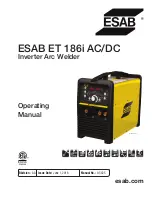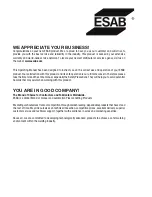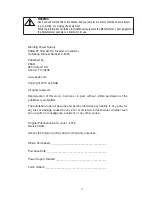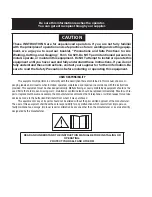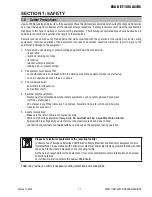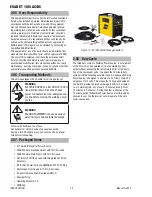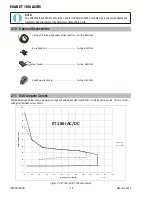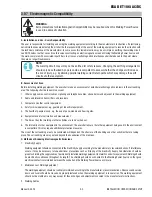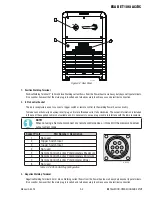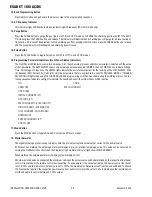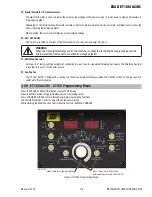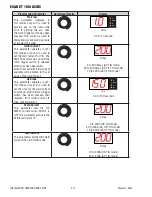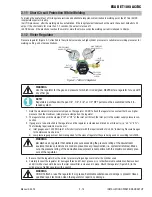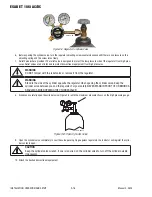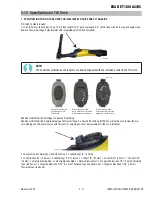
ESAB ET 186i AC/DC
INSTALLATION, OPERATION AND SETUP 3-2 Manual 0-5425
Attached to the power supply is an input power cord with a 208/230Volt 50 Amp NEMA 6-50 P for plug.
WARNING
An electrical shock or fire hazard is probable if the following electrical service guide recommendations
are not followed. These recommendations are for a dedicated branch circuit sized for the rated output
and duty cycle of the welding Power Source.
50 / 60 Hz Single
Phase Supply
Supply Voltage
208/230V AC
Input Current at Maximum Output
32 Amps
Maximum Recommended Fuse* or Circuit Breaker Rating * Time
Delay Fuse, UL class RK5. Refer to UL248
50 Amps
50 Amps
Maximum Recommended Fuse^ or Circuit Breaker Rating ^Normal
Operating , UL class K5. Refer to UL248
Minimum Recommended Cord Size
12 AWG
Maximum Recommended Extension Cord Length
50 ft
Minimum Recommended Grounding Conductor Size
12 AWG
Table 3-1: Electrical Service Guide
3.05 High Frequency Introduction
The importance of correct installation of high frequency welding equipment cannot be overemphasized. Interference due to high
frequency initiated or stabilized arc is almost invariably traced to improper installation. The following information is intended as a
guide for personnel installing high frequency welding machines.
!
WARNING
The high frequency section of this machine has an output similar to a radio transmitter. The machine
should NOT be used in the vicinity of blasting operations due to the danger of premature firing
!
WARNING
It is also possible that operation close to computer installations may cause computer malfunction.
3.06 High Frequency Interference
Interference may be transmitted by a high frequency initiated or stabilized arc welding machine in the following ways.
1.
Direct Radiation
: Radiation from the machine can occur if the case is metal and is not properly grounded. It can occur
through apertures such as open access panels. The shielding of the high frequency unit in the Power Source will prevent direct
radiation if the equipment is properly grounded.
2.
Transmission via the Supply Lead
: Without adequate shielding and filtering, high frequency energy may be fed to the
wiring within the installation (mains) by direct coupling. The energy is then transmitted by both radiation and conduction. Adequate
shielding and filtering is provided in the Power Source.
3.
Radiation from Welding Leads:
Radiated interference from welding leads, although pronounced in the vicinity of the
leads, diminishes rapidly with distance. Keeping leads as short as possible will minimise this type of interference. Looping and
suspending of leads should be avoided wherever possible.
4.
Re-Radiation from Unearthed Metallic Objects
: A major factor contributing to interference is re-radiation from
unearthed metallic objects close to the welding leads. Effective grounding of such objects will prevent re-radiation in most cases.

